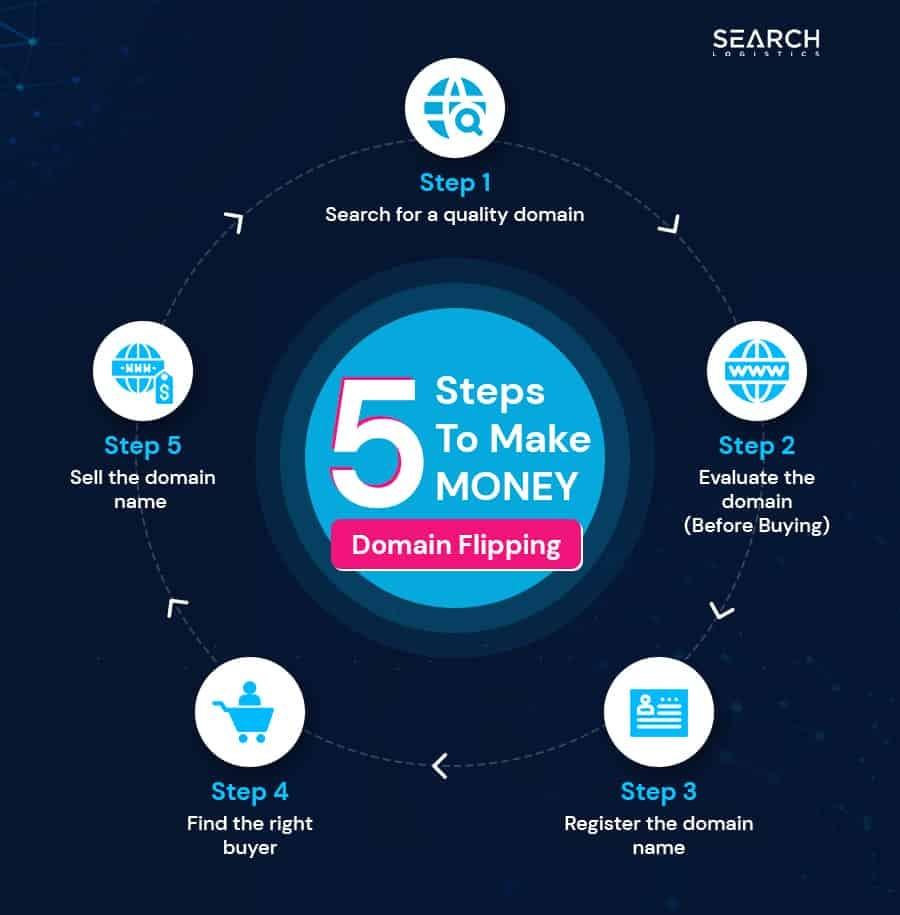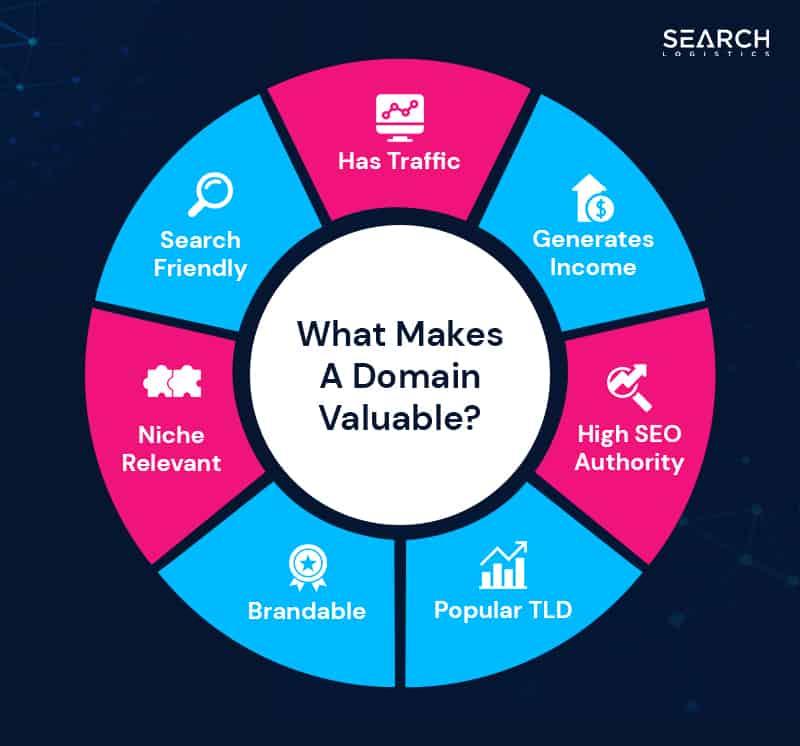Table of Contents
- Understanding the Domain Flipping Market Landscape
- Identifying High-Potential Domains for Maximum Profit
- Effective Strategies for Pricing and Selling Your Domains
- Marketing Your Domain Portfolio to Attract Buyers
- Navigating Legal Considerations in Domain Flipping Transactions
- Q&A
- Final Thoughts


Understanding the Domain Flipping Market Landscape
The domain flipping market has evolved significantly over the past decade, transforming into a dynamic ecosystem where savvy investors and entrepreneurs can reap considerable rewards. As digital real estate gains prominence, understanding the nuances of this market becomes crucial for anyone looking to capitalize on domain flipping opportunities. The foundation of successful flipping lies in recognizing the potential value of domains, which can be influenced by various factors including niche relevance, keyword strength, and brandability.
Investors often categorize domains based on their potential resale value. Key metrics to consider include:
- Length: Short domains tend to be more desirable, as they are easier to remember and type.
- Keyword Relevance: Domains that contain popular keywords can attract higher traffic, making them more valuable.
- Extension: The .com extension remains dominant, though country-specific and niche TLDs (like .tech or .design) are gaining traction.
To better illustrate market trends, examining recent sales can provide valuable insights. Below is a table showcasing the average selling prices of domains across different categories:
| Domain Type | Average Selling Price |
|---|---|
| Short .com | $30,000 |
| Two-Word .com | $5,000 |
| Niche TLD (e.g. .tech) | $2,500 |
| Expired Domains | $1,000 |


Identifying High-Potential Domains for Maximum Profit
When venturing into the realm of domain flipping, the identification of high-potential domains is crucial for maximizing your profits. A successful domain can be likened to a prime piece of real estate on the internet, where demand and desirability play significant roles. Here are some key factors to consider:
- Keyword Relevance: Choose domains that include trending or highly searched keywords. Use tools like Google Trends or Keyword Planner to find popular terms that capture user interest.
- Domain Length: Shorter domains are typically more memorable and easier to type. Aim for domains that are 15 characters or fewer for optimal retention.
- Brandability: A catchy or unique name can significantly increase a domain’s appeal. Consider how easily a domain can be associated with a specific niche or market.
Another critical aspect is to evaluate the historical performance of a domain. A domain that has previously been registered and then left unused may hold age-related SEO benefits. Here’s what to examine:
| Factor | Importance | How to Check |
|---|---|---|
| Age of Domain | Older domains can attract more traffic due to established credibility. | Use WHOIS lookup tools. |
| Previous Use | Previously active domains may have backlinks that boost visibility. | Check archive.org for history. |
| SEO Metrics | High Domain Authority (DA) can enhance resale value. | Use Moz or Ahrefs to analyze. |
networking is a potent tool when identifying high-potential domains. Engaging with industry professionals can uncover opportunities that may not be publicly listed. Participating in online forums, domain auctions, and social media groups focused on domain trading can provide invaluable insights. Such connections help you stay informed about emerging trends and evaluate domains from a community perspective, which enhances your decision-making. Keep these strategies in mind, and you’ll be well on your way to identifying domains with maximal flipping potential.


Effective Strategies for Pricing and Selling Your Domains
Setting the right price for your domains is crucial in maximizing returns. To determine the optimal price, consider factors such as the domain’s length, keyword relevance, and market trends. Research comparable domains that have been sold recently to gauge what similar names fetch in the current market. Use tools like GoDaddy’s Domain Appraisal or Estibot to get an estimated value, but trust your gut—sometimes a unique or memorable domain can command a higher price than estimated.
Creating an attractive listing is equally important for enticing potential buyers. Highlight the unique selling points of your domain in the description. Make sure to include keywords that buyers might search for, which can increase your listing’s visibility. Use engaging language that vividly paints a picture of the potential uses for the domain. Incorporate the following elements into your listings:
- Your Domain’s Age: Older domains often have established authority.
- SEO Potential: Mention any relevant traffic or search engine ranking metrics.
- Brandability: Explain how the domain can create a strong brand presence.
When it comes to selling, consider leveraging online platforms specific to domain sales. Many marketplaces like Sedo, Flippa, and Afternic offer a vast audience looking specifically for domain investments. Utilize these channels to list your domains and set a competitive commission fee, ensuring that you can attract more buyers. Keep track of your listings and spotlight domains that are getting more views or inquiries. A well-placed advertisement can significantly enhance interest and improve your chances of closing a deal.
Marketing Your Domain Portfolio to Attract Buyers
Marketing your domain portfolio effectively is crucial for attracting potential buyers and maximizing your investment returns. Start by showcasing your domains in a well-organized, visually appealing manner. Create a dedicated website or landing page that presents your portfolio with clarity. Use high-quality graphics and concise descriptions to highlight the unique features of each domain. Customers appreciate an intuitive browsing experience, so categorize your domains by niche or price range to facilitate easy navigation.
Utilize social media platforms to promote your domains widely. Sharing insights about current trends in the domain market on platforms like Twitter, Facebook, and Instagram can significantly increase visibility. Additionally, consider joining specialized forums and communities where investors gather, such as domain flipping groups on Reddit or Facebook. Engaging with the community through valuable discussions and expert opinions can help establish your reputation and attract serious buyers.
Another effective strategy is to leverage SEO techniques to enhance your online presence. Optimize your portfolio site with relevant keywords related to the domains you are selling. Here’s a simple table showcasing effective SEO strategies:
| SEO Strategy | Description |
|---|---|
| Keyword Research | Identify high-traffic keywords related to domain flipping. |
| On-Page SEO | Use meta tags and alt text effectively for better indexing. |
| Backlink Building | Connect with bloggers and partners for quality backlinks. |
By implementing these strategies, you’ll not only improve your site’s ranking but also create more opportunities for potential buyers to discover and engage with your domain portfolio.


Navigating Legal Considerations in Domain Flipping Transactions
Entering the domain flipping arena requires not only a keen eye for valuable domain names but also a solid understanding of the legal landscape that governs such transactions. Every domain sale is intertwined with various legal considerations that can impact both the buyer and seller. One crucial aspect is ensuring that the domain does not infringe on existing trademarks or copyrights. A simple name that seems appealing may lead to significant legal complications if a well-known brand owns the rights to it. Thorough due diligence is not just advisable; it’s essential for avoiding costly disputes.
Another critical factor involves the terms of the sale itself. Crafting a well-defined purchase agreement can protect both parties and ensure clarity throughout the transaction. Consider including items such as payment terms, transfer responsibilities, and any warranties regarding the domain’s status. Without a legally binding agreement, misunderstandings can arise, potentially jeopardizing the deal. Here’s what to include in your agreement:
- Domain Name: Clearly outline the domain being sold.
- Payment Details: Specify the total amount and payment method.
- Transfer Process: Define who handles the transfer and the timeframe involved.
- Warranties: State any guarantees about domain ownership and issues.
- Dispute Resolution: Outline steps for resolving any potential disagreements.
don’t overlook the implications of taxes and potential profits from flipping domains. Each sale could result in capital gains tax, depending on your jurisdiction. Understanding your local tax legislation can help you better structure your purchases and sales to maximize profits while remaining compliant. It may also be wise to consult with a tax advisor who specializes in e-commerce or digital assets to navigate this complex terrain effectively. Here’s a simple comparison of potential tax responsibilities:
| Type of Sale | Tax Implication |
|---|---|
| Short-term Flip | Ordinary income rate |
| Long-term Hold | Lower capital gains rate |
| Domain Rental | Ordinary income rate |
Q&A
Q&A: Understanding Domain Flipping and Profit Potential
Q1: What is domain flipping? A: Domain flipping is the practice of buying domain names at a low price and then selling them at a higher price for profit. Investors search for unique or trending domain names that have the potential to attract buyers, often holding onto these domains until a favorable market opportunity arises.Q2: How do I determine if a domain is worth flipping? A: To evaluate a domain’s flipping potential, consider factors such as length, keywords, brandability, and extension (like .com, .net, or .org). Tools like domain appraisal services can provide estimates of value based on these criteria, helping you make informed decisions.
Q3: What are the initial costs involved in domain flipping? A: The initial costs typically include registering the domain, which can range from $10 to $50 depending on the registrar and domain extension. Additional costs might accrue if you choose to invest in premium domains or pay for listing services on marketplaces.
Q4: How long does it usually take to flip a domain? A: The time it takes to flip a domain can vary widely. Some domains may sell within days, while others may take months or even years to find the right buyer. Patience and strategic marketing are often key components of successful domain flipping.
Q5: What strategies can I use to increase my chances of profit? A: To maximize your potential profit, consider engaging in proactive marketing by listing your domains on reputable marketplace platforms, optimizing your domain names with relevant keywords, and establishing a strong online presence through social media or a dedicated website.
Q6: Are there any risks involved with domain flipping? A: Yes, like any investment, there are risks. The domain market can be volatile, and not every domain will appreciate in value. Additionally, if you buy domains that are too niche or irrelevant to the market, you may struggle to sell them at a profit.
Q7: Can anyone participate in domain flipping? A: Absolutely! Domain flipping is accessible to anyone with an internet connection and an interest in the process. However, success often comes with experience, research, and a keen understanding of market trends.
Q8: What are some common pitfalls to avoid when starting with domain flipping? A: Common pitfalls include overspending on domains, failing to do proper research on trends, neglecting to network within the domain community, and underestimating the time it may take to sell a domain. Learning from these mistakes can help refine your strategy over time.
By understanding these key aspects of domain flipping, you can navigate the landscape more effectively and position yourself for profitable opportunities in this intriguing market.

